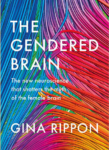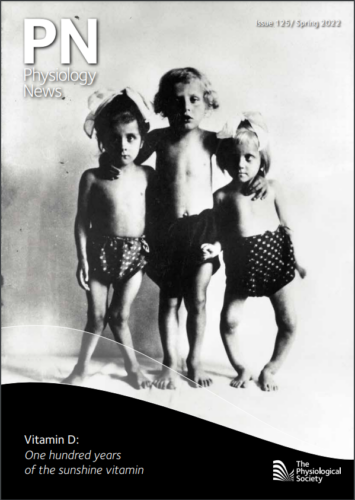
Physiology News Magazine
Book Review
The Gendered Brain: The new neuroscience that shatters the myth of the female brain by Gina Rippon
News and Views
Book Review
The Gendered Brain: The new neuroscience that shatters the myth of the female brain by Gina Rippon
News and Views
https://doi.org/10.36866/pn.25.14
Dr Philip Lewis, University Hospital of Cologne, Germany
According to the argument put forward by the author, my membership of the XY sex chromosome category has defined many of the gendered stimuli I will have been exposed to since birth (possibly “blue for boys” as an example but I cannot remember that far back).

Subsequent genetic, environmental and gene–environment interaction effects will then have further defined the amount and effect of subsequent gendered stimuli in a circular fashion. This includes how others react to me and make decisions concerning me. The gendered stimuli I have been exposed to can play a role in shaping the opinions I form, decisions I make, and reactions I have. They can even play a role in my performances in various situations. In a nutshell, this is the development and effect of ”unconscious bias”. Already somewhat aware of this, and taken together with my XY membership and my expectations about the book’s content, I was a bit nervous about reading/reviewing in case my review erred toward negative. I do not believe unconscious bias on my part has played a strong role in my review (of course, I cannot be sure), but it may play a role in how this review of a book with strong arguments on a controversial topic might be received. Ultimately, I have mixed feelings about the book and, overall, I did not really enjoy it. The key points regarding why follow. Hopefully, the opinion of a brain trained in science (generally, not psychology specifically) will shine through in this review rather than XY unconscious bias.
I found the lines between associative evidence and author opinion and between assumption and fact too often blurred when it came to the content compatible with the author’s opinion. The effect of this was an overstating of the strength of the compatible evidence and author opinion. This is especially disappointing as I find myself mostly agreeing with many of the author’s general opinions. While this blurring might not be picked up by the lay reader, it damages the actual strength of the evidence for the scientific reader. Taking one example from p.118: “our brain will act like an eager deep learning system and soak prejudices like the ones I just told you about” (“will” makes this a very definitive statement). One of those deep-learning machines we had been just told about is the Microsoft chatbot Tay. “Tay went from tweeting about how ‘humans are supercool’ to becoming a ‘sexist, racist asshole’ within sixteen hours” (p.358). So, I dare not think what the ~300,000 hours of information absorbing by my “deep-learning” brain “will” mean for me. Another example is on p.186, the “suggested that babies…actively engage” was shortly followed and translated into the more definitive “babies can rapidly acquire” (suggested ≠ can). Such blurring was too abundant throughout.

To balance with a positive, some of the insights provided into inferences made from psychology experiments (especially in babies) are fascinating to read, albeit the fascination is from disbelief. Did you know, following mini-morality plays, 3-month-old babies signal moral approval for the good character in the play by reaching for them when given the choice of good or bad character (p.190)? Getting beyond the fact that these are morality evaluations in 3-month-olds, and then the massive potential for experimenter bias, you might ask why the scientists conclude that this reflects babies’ moral approval for the good character rather than them reaching for the person they might consider easier to exploit/manipulate for food or entertainment. The latter is my own suggestion of a potential inference. If you read this book, I expect you shall not be short of your own concerning such concepts.
Some difficult-to-believe inferences are even built on each other: A baby opening its mouth is an indication of interest in an object or the object being novel… Identification of novelty is a measure of environmental impact on baby brain development…. Others can somewhat contradict each other: Babies appear to be aware that a conversation will quickly break down if there is no mutual gaze between speakers as determined by them being happier if the gaze from a face is on them, but in a different experiment they will happily focus on the object of someone’s gaze ….!?!
Even though a massive research undertaking has undoubtedly been performed to produce this work, the central argument would probably be best served by describing a normal distribution with an x-axis title of “insert personality trait score here”. Essentially, for all such traits and abilities, we are all on a spectrum. Myth = shattered. Perhaps even use two overlapping distributions, one for individuals with XY chromosome pairs and one for individuals with XX chromosome pairs, and one slightly left or right shifted or skewed or leptokurtic or platykurtic, depending on your trait and population and explain how the averages cannot and should not be considered as being able to correspond to individuals.
The conclusion section summarises the most interesting information from the preceding chapters quite well and includes potential explanatory variables for any differences in averages or shapes of distributions. The other 300+ pages of forced comparisons and assumptions that come across as fact I probably could have done without.
Overall, my notes whilst reading could be used to write half a book (I got tired of noting the same issues about halfway through) about all of the content that I do not like. Yet, I am inclined to agree with the author’s general opinions, albeit neither convinced by some of the inferences from psychological studies nor how the author formulates her arguments (I can at least envisage how it could be formulated with more balance). Simply, the content seems a better fit for her opinions. As for shattering the myth of the female brain, the author makes a good argument for how biased nurture could result in a “female brain” so I am not sure about that.
Most importantly, in the conclusion she states: “We can ensure that brain owners are aware of just how flexible and malleable an asset they have in their heads, but also make our society aware of the brain-changing nature of negative stereotypes (of any kind)… which can lead to self-silencing, self-blame, self-criticism and plummeting self-esteem.” Irrespective of what theory/stance this arises from, it is a message that should not be understated.
